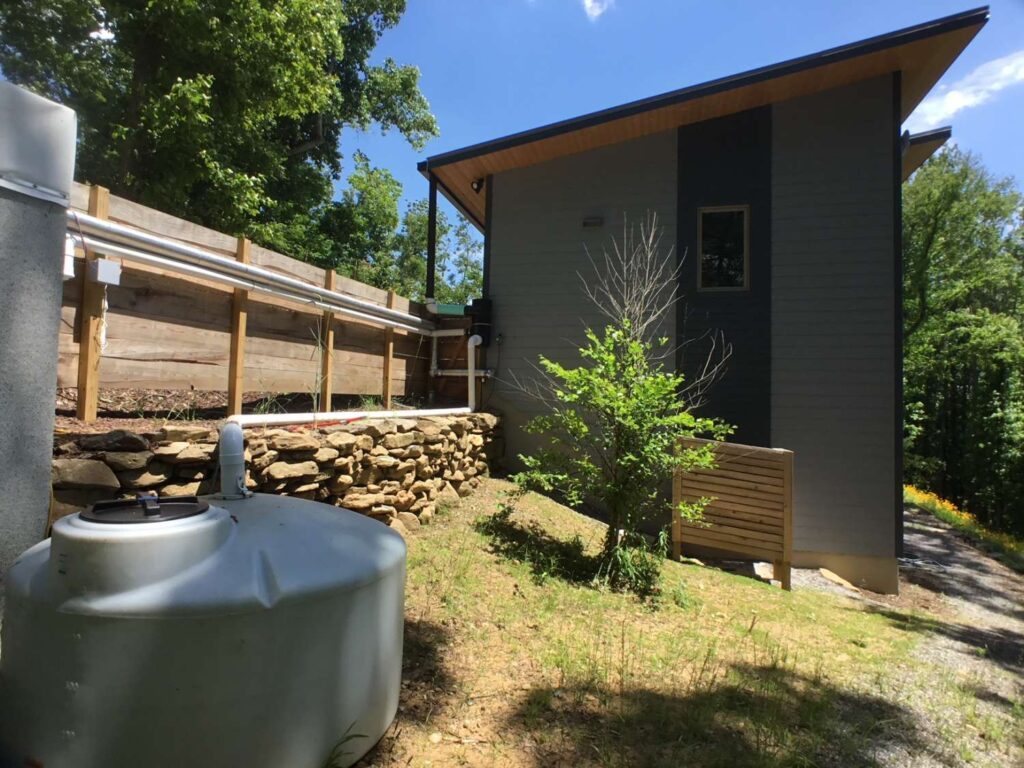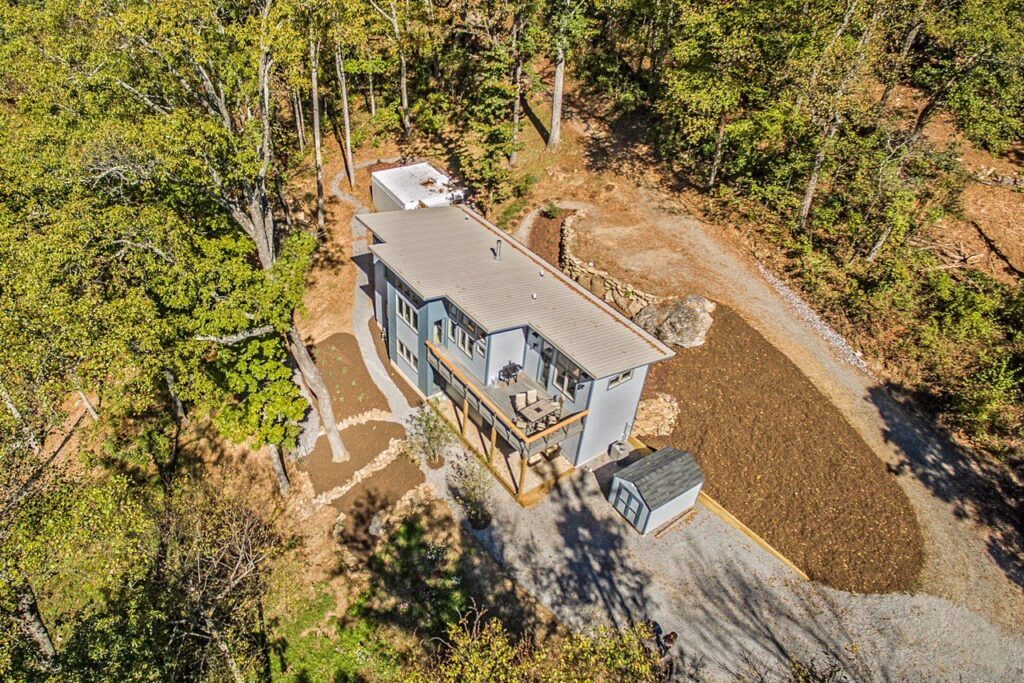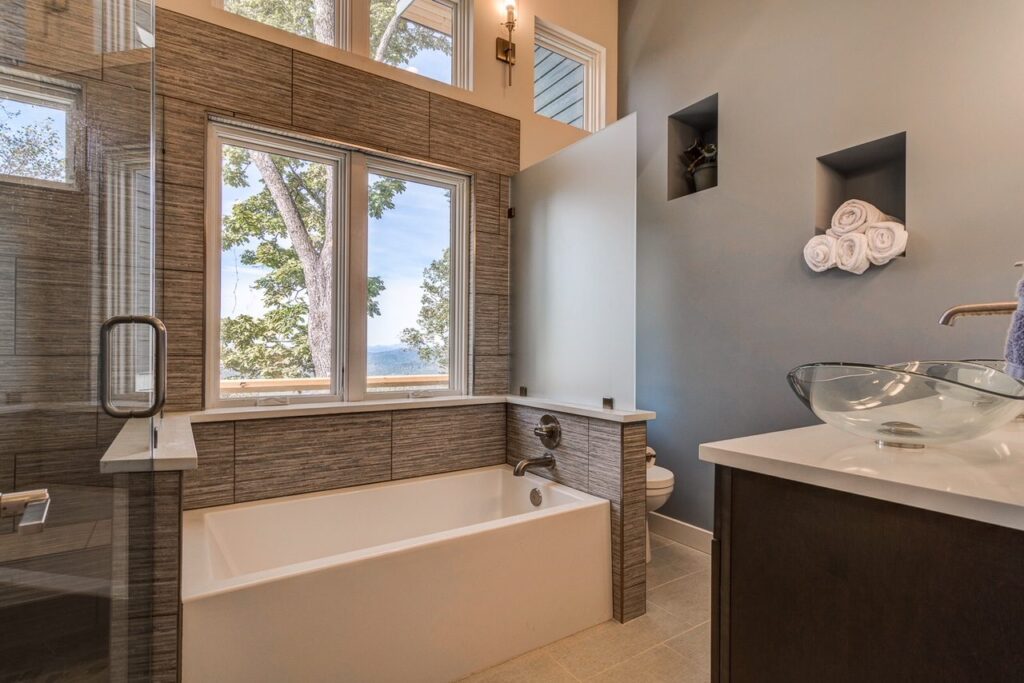Here in the U.S., we have long been fortunate to have access to some of the safest drinking water in the world available just by turning on the tap. However, continued population growth and economic development has led to increasing concern over maintaining sufficient water supply.
Recently, we faced this challenge head on as we struggled to acquire a sufficient water supply for a home being built in Swannanoa.

The challenge
Our client purchased a tract of land that was on a steep slope protected ridge site. The site was chosen for its amazing views and its affordability given the real estate market. The buyers were under the impression that the existing well could be fracked, yet after further investigation, their worst fears were realized.
Although a well can be drilled up to 1,200 feet deep, the previous owners had two wells drilled on the property, with the deepest being 900 feet deep, and both wells were dry. Two adjacent neighbors fracked their wells with very limited success and had recent repairs costing more than $25,000.
Given these circumstances, we decided to pursue a rainwater collection system for the sole source of potable water for our client. Our project team had been exposed to similar catchment systems while living in St. Croix in the U.S. Virgin Islands.

The project in Swannanoa would rely on an engineered system that filtered rainwater to be safe for use as potable drinking water. The county required an engineered set of plans which would be used for permitting and bank loan acquisition.
Although the county was no stranger to rainwater harvesting, this job was one of the first permitted projects for potable water use. Since rainwater is not seen as a common source of potable water, it required additional documentation to assure building officials that this was a viable system. Ultimately, it was the engineered design that allowed this project to come into fruition.
The solution
Our 11,000-gallon cistern was built with insulated concrete form blocks and a gently sloped thermoplastic polyolefin membrane roof. The water was collected from a metal roof on the main house and the cistern roof itself.
The tank indicator that was installed could be monitored remotely through a network.This feature was particularly helpful since the client rents the lower floor as an Airbnb and must ensure water availability.
The water is pre-filtered using a German engineered vortex filter which achieves a 95 percent recovery and 5 percent waste. The waste water was diverted into a separate 500-gallon tank used for irrigation.
Since the cistern was built above-ground due to a large vein of rock that prevented a below-ground installation, the main water supply had to be properly insulated and equipped with a thermostatically controlled heat trace wire to prevent freezing.
Our team installed a whole-house filtration system with multi-stage filters and UV-lighting technology which ultimately made the water potable.
We also installed a greywater collection system which supplies the toilets only. This allowed for a projected greywater recovery of 7,600 gallons annually.

The takeaway
The construction and use of cisterns to store rainwater can be traced back to the Neolithic Age. Though common practice in many parts of the world, this is still a relatively new concept in the U.S.
We are living in an age where luxury has finally met sustainability. Thanks to current technologies and consumer demand, manufacturers have responded to global concerns by developing new products to meet the demands of the most distinguished clients while fulfilling their environmental commitment.
Having earned a Green Built Homes Gold certification, our recent project in Swannanoa illustrates the potential for water conservation, as well as water independence.
Although there is an abundance of water in Western North Carolina, the global demand for water is ever-growing. It is our hope that more homeowners and builders will adopt similar practices. Simple measures can ensure the availability of these precious resources for generations to come.
Darren Henegar is a general contractor and owner of Evergreen Construct Inc. in Asheville. As a husband and father of three children, he understands the importance of protecting resources for future generations. His passion for sustainability and quality craftsmanship offers a depth of experience that is professional, creative and personal.
You can also view this article as it was originally published on pages 16-17 of the 2018-2019 edition of the directory.

